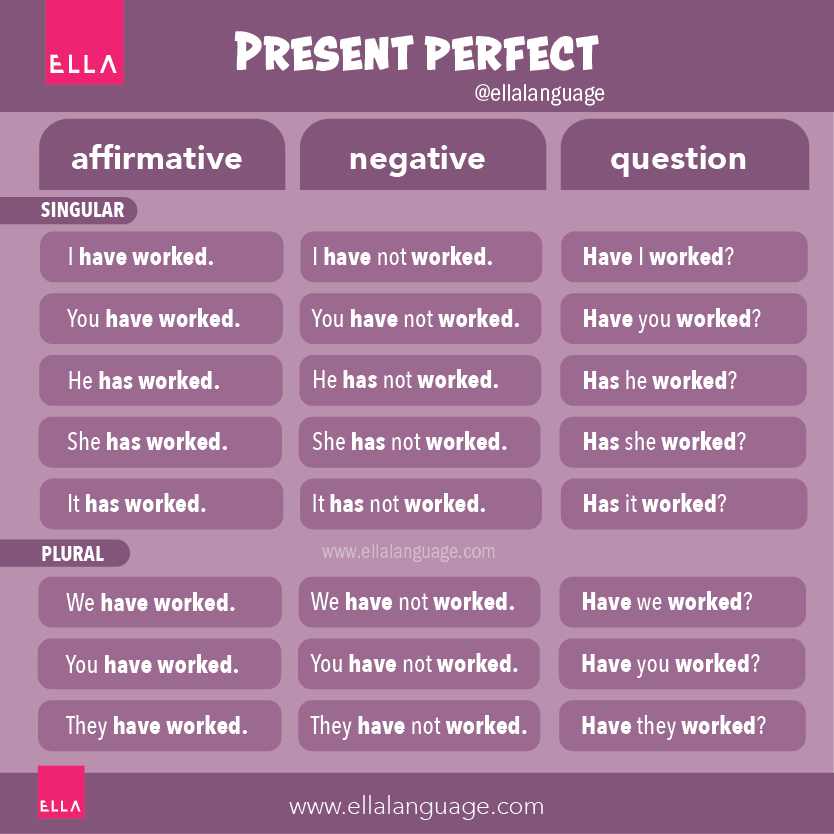Present Perfect
The Present Perfect is a very interesting English tense. It’s a present tense, but we use it to talk about events from the past. However, it’s important to note that these past events influence the present. In the Present Perfect, we use the third form of the verb – the Past Participle. In American English, Present Perfect is often replaced with Past Simple.

Affirmative sentences in Present Perfect
To form sentences in the Present Perfect we add have to the main verb in the Past Participle form. Have comes before the main verb.
Subject + have/has + Past Participle + the rest of the sentence
In the third person singular, the verb have takes the form has.
To shorten the sentence we can use contractions.
Have / has
| I have ⇒ I’ve | we have ⇒ we’ve |
| you have ⇒ you’ve | you have ⇒ you’ve |
| he has ⇒ he’s | they have ⇒ they’ve |
| she has ⇒ she’s | |
| it has has ⇒ it’s | |
Negative sentences in Present Perfect
We form negative sentences by adding not. Not is placed between have/has and the main verb.
Subject + have/has + not + Past Participle + the rest of the sentence
We create negative contractions by combining have/has with not.
has not ⇒ hasn’t
Questions in Present Perfect
Questions in the Present Perfect are formed by the inversion of have/has.
Have/Has + subject + Past Participle + the rest of the sentence
The Usage of Present Perfect
We use the Present Perfect to talk about:
I have dropped my toast and I can’t eat it now.
I have watched a lot of TV this weekend.
I have seen this movie a few times.
There has been a big sale at that store.
We have just arrived in New York.
I have never seen such a beautiful painting in my life!
Chinese has become a very popular language in recent years.
My daughter has learned how to write.
They haven’t called yet.
I’ve had three strokes in the past year.





